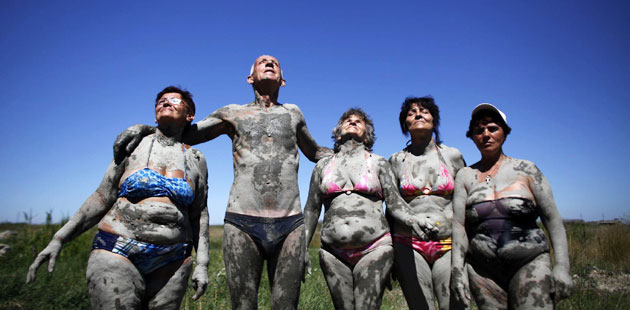More oil seepage found at Bohai Bay platforms
Updated: 2011-08-27 11:26
(China Daily)
|
|||||||||||
Administration insists on deadline, and ConocoPhillips vows to comply
BEIJING - More oil has been detected near the two leaking oil platforms in Northeast China's Bohai Bay, authorities said.
A statement released by the North China Sea branch of the State Oceanic Administration on Thursday said 16 oil leaks have been detected under platform C and oil and gas are still bubbling in the water in the area of the platform.
Although no oil slick was detected near platform B, which has been covered by a steel tent since July 2, 16 cubic meters of water pumped from within the tent contain 5.4 liters of oil, the statement said. That result shows that the leak at platform B continues, it said.
"Oil belts are being monitored in the nearby sea and surface water in the monitoring area in Bohai Bay, especially near platform C, and there are high levels of oil," Cui Wenlin, director of the North China Sea Environmental Monitoring Center, told China Daily on Friday.
From June 4, when the leak was detected, to Aug 23, 5,500 square kilometers of seawater in Bohai Bay have been polluted, 870 sq km of which were seriously contaminated, according to statistics the administration released on Thursday.
More than 387 cubic meters of oil-based drilling mud had been collected from the seafloor near platform C by Wednesday, the statement said.
Liu Cigui, director of the administration, said ConocoPhillips China, the operator of the Penglai 19-3 oilfield, has to finish the cleanup before Aug 31, the deadline previously set by the administration.
If it fails to meet the deadline, the penalties will be more severe, Liu told China Central Television, without giving details.
The newly discovered seepage was found after ConocoPhillips said on Wednesday that all leaks have been stopped after more than 80 days of cleanup.
The oil company guaranteed that it will meet the deadline, a spokesman said on Friday, because the new seepage comes from the same source under the seabed that has been permanently sealed.
The new seepage came from mud that had previously become oily, according to the company. It will be cleaned up before the end of the month, the company said.
"We continue to capture and contain a small volume - approximately one liter per day - of residual gas and oil from the seepage. Today, there is no oil reaching the surface from the seep. Additionally, the company is implementing plans to further ensure the fault is sealed off by pumping cement into various spots along the fault," Rich Johnson, a spokesman for the company, told China Daily in an e-mail on Friday.
The company insisted no coastal areas had been polluted by the leak. It declined to say how much oil detergent has been used in the cleanup.
But Wang Fei, deputy director of the State Oceanic Administration, said in a videoconference on Thursday that monitoring results show the leaks affected part of the coastline in west Bohai Bay and oil drops collected in Liaoning and Hebei provinces were proved to be from the Penglai 19-3 oilfield.
Zhong Yu, a senior Greenpeace action coordinator, told China Daily that use of the oil detergent will in itself pollute the environment and that ConocoPhillips should inform the public of the potential environmental impact.
Some environmentalists called for stricter penalties than the 200,000 yuan ($31,000) fine currently levied in such cases.
"The oceanic authority should shut down ConocoPhillips' oil business in Bohai Bay, or even in all of China," Ma Jun, director of the Institute of Public and Environmental Affairs, told China Daily on Friday.
The State Oceanic Administration announced on Wednesday that it has begun to prepare a lawsuit against ConocoPhillips China for compensation.
Meanwhile, China National Offshore Oil Corp, which holds a 51 percent stake in the oilfield, said on Friday in a statement that it has negotiated with the governments of places suffering losses in the incident and will evaluate the farmers' losses and their compensation claims.
Related Stories
ConocoPhillips finds 7 new leaks 2011-08-26 15:31
ConocoPhillips urged to clean up oil spills 2011-08-26 09:51
ConocoPhillips China coy on spill 2011-08-25 18:06
ConocoPhillips vows to clean up oil spills 2011-08-24 19:18
ConocoPhillips admits of new oil spill sources 2011-08-22 09:44
- Profits of China's industrial businesses up 28.3%
- More oil seepage found at Bohai Bay platforms
- Terra Firma lands in China
- Troubled US firms see Chinese opportunities
- Surging economy boosting airlines
- PetroChina Q2 profit falls below estimates
- Markets set to rise: CICC chairman
- China to review foreign M&A













